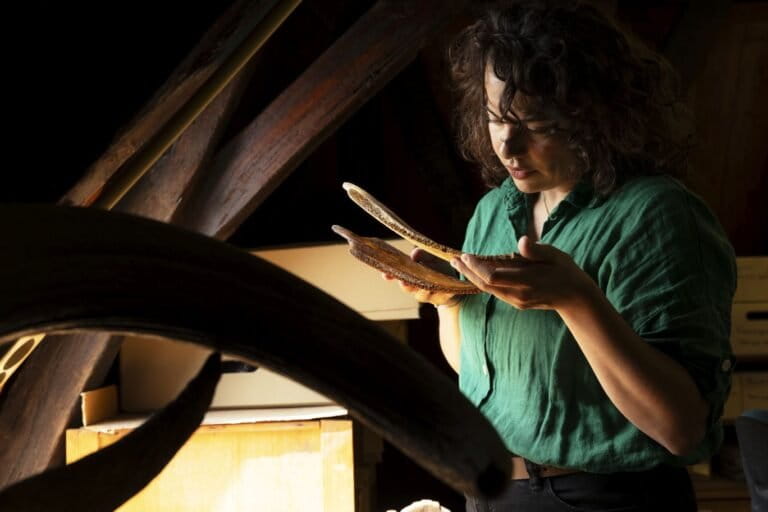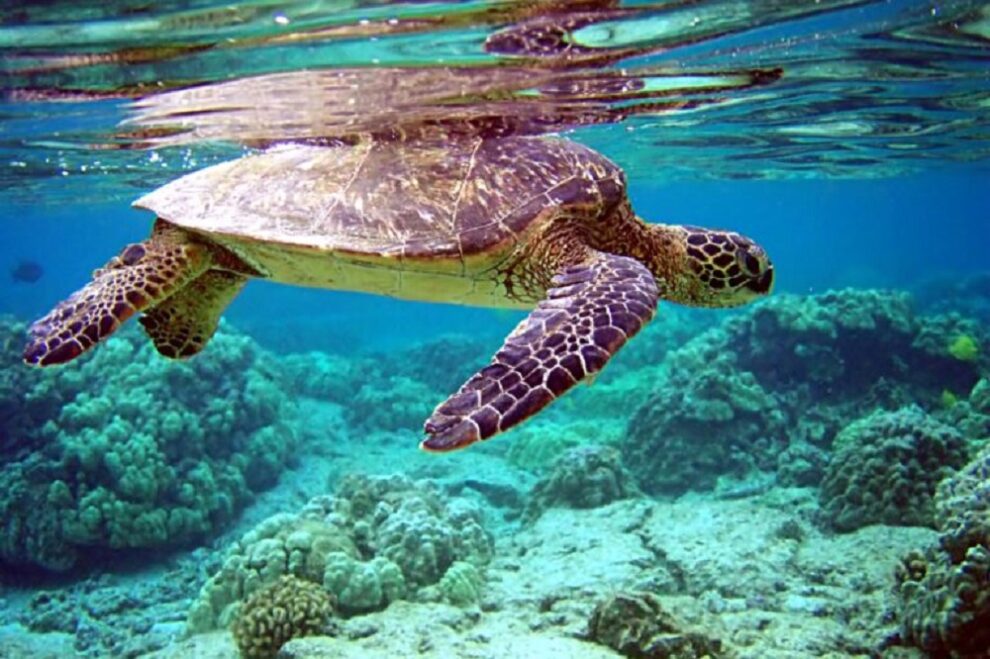- Researchers have traced the 3,000-year-old “food footprints” of endangered green sea turtles around the Mediterranean.
- By comparing turtle bone samples from Bronze and Iron Age archaeological sites to skin samples from turtles they’re tracking by satellite today, they’ve uncovered turtles’ enduring preference for the same sea meadows.
- The findings highlight the importance of protecting these underwater meadows, which face degradation due to conversion, pollution and climate change.
A multidisciplinary team of researchers comparing bone samples from ancient turtles with skin samples from modern-day green turtles have been able to trace the “food footprints” of this endangered species. The evidence points to these turtles returning to the same seagrass meadows on the North African coast of the Mediterranean for at least 3,000 years.
Until now, knowledge of the green sea turtle’s (Chelonia mydas) pickiness for certain foraging spots, known as site fidelity, was based on limited samples, only dating back around 50 years, Willemien de Kock, a marine biologist at University of Groningen in the Netherlands, told Mongabay. De Kock and her team, comprised of archaeologists, biologists and ecologists, used modern satellite tracking data and archaeological findings from Bronze and Iron Age sites to analyze ancient turtle feeding habits.
Thousands of years ago, ancient peoples were eating turtles, leaving behind traces in the form of bones with collagen in them. It was these archaeological samples that de Kock and her team compared with skin samples from contemporary green turtles.
“[I]t gives us an amazing snapshot into the ancient world, if we then look at their biological characteristics,” she said.

Their results, published in the journal Proceedings of the National Academy of Sciences, indicate modern-day turtles forage on the same North African seagrass meadows as their ancient counterparts did 3,000 years ago, de Kock said.
The findings have direct conservation implications for this threatened population and its endangered seagrass habitat, she added. A predominant strategy is to protect turtle nesting sites, though conservation of where they feed is neglected. Globally, seagrass meadows are at risk due to conversion, pollution and climate change. The latter poses a particular threat to North Africa’s seagrass, with widespread losses predicted, according to the study.
“We put a lot of effort into sea turtle conservation, especially green sea turtles,” de Kock said. “We don’t necessarily put as much conservation effort into the areas where they actually spend most of their time, which is their foraging grounds, the seagrass meadows.”
Yakup Kaska, who was not involved in the research and is director of Turkey’s Sea Turtle Research, Rescue and Rehabilitation Center (DEKAMER), agreed, likening green turtles to gardeners of the oceans, as the health of seagrass meadows and turtles are intertwined.
For him, the multidisciplinary approach taken by the study is vital to deepening the understanding of turtle migration and conservation needs. “In the future, we need to have more collaboration not only between scientists, but between countries as well,” he said in an interview. “[Turtles] may be nesting in one country’s beach, but feeding on the seagrass in another.”
De Kock said that, in her view, these turtle foraging sites are akin to heritage sites used by people for centuries and thus deserving of special status. “These seagrass meadows have been used by sea turtles for thousands of years and I believe that makes them really special,” she said.
She said the approach could be applied to other species too, such as manatees, dugongs and potentially even migrating birds, to help identify priority habits for conservation. “That really is the novelty of this work. It could really contribute to the discussion of the importance of certain natural areas,” de Kock said.

Citation:
De Kock, W., Mackie, M., Ramsøe, M., Allentoft, M. E., Broderick, A. C., Haywood, J. C., … Çakırlar, C. (2023). Threatened North African seagrass meadows have supported green turtle populations for millennia. Proceedings of the National Academy of Sciences, 120(30). doi:10.1073/pnas.2220747120
Banner image: Green turtle (Chelonia mydas). Image by Jim Frodel via Wikicommons (CC BY-SA 4.0)
Source : Mongabay





Add Comment